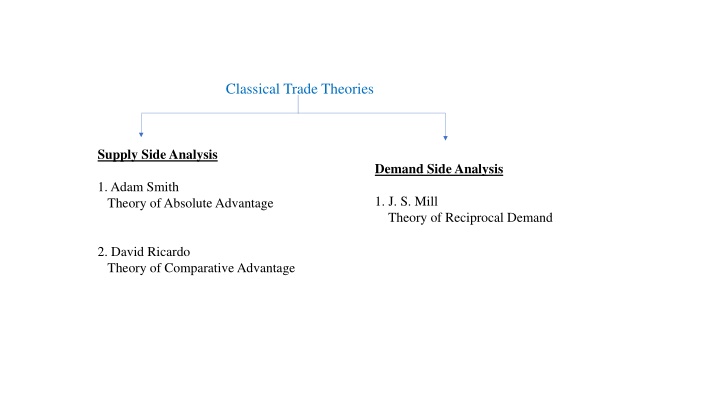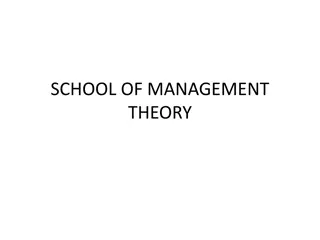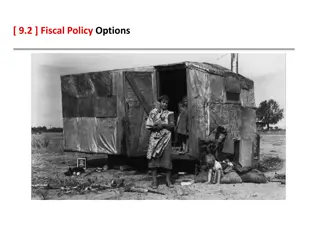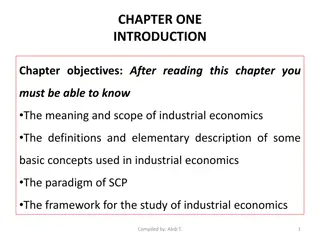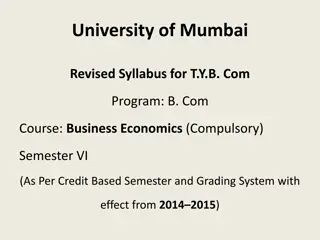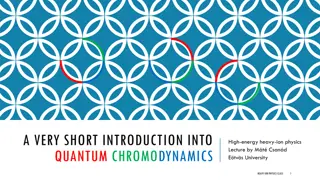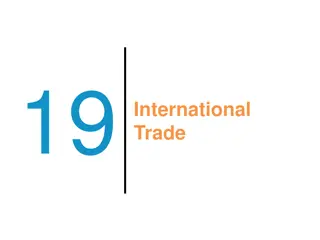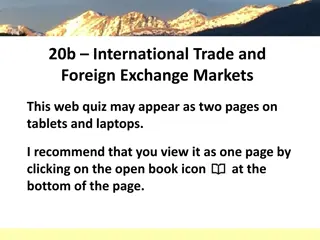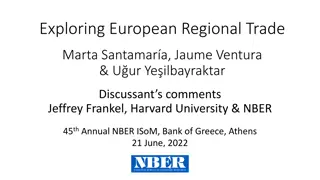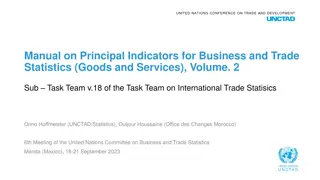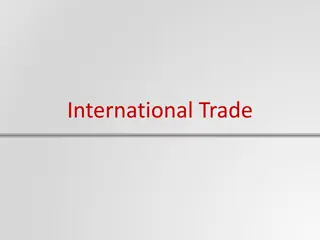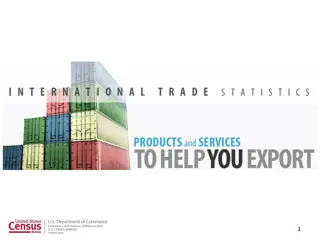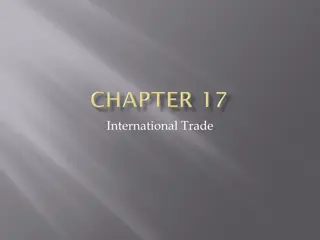Classical Trade Theories and Their Limitations in International Economics
Classical trade theories such as the Theory of Absolute Advantage by Adam Smith and the Theory of Comparative Advantage by David Ricardo highlight the benefits of free trade and specialization based on natural advantages. However, these theories have limitations, such as the inability to explain scenarios where one country is advanced while another is backward. Assumptions, production examples, and major drawbacks of these theories are discussed in detail.
Download Presentation

Please find below an Image/Link to download the presentation.
The content on the website is provided AS IS for your information and personal use only. It may not be sold, licensed, or shared on other websites without obtaining consent from the author.If you encounter any issues during the download, it is possible that the publisher has removed the file from their server.
You are allowed to download the files provided on this website for personal or commercial use, subject to the condition that they are used lawfully. All files are the property of their respective owners.
The content on the website is provided AS IS for your information and personal use only. It may not be sold, licensed, or shared on other websites without obtaining consent from the author.
E N D
Presentation Transcript
Classical Trade Theories Supply Side Analysis Demand Side Analysis 1. Adam Smith Theory of Absolute Advantage 1. J. S. Mill Theory of Reciprocal Demand 2. David Ricardo Theory of Comparative Advantage
Theory of Absolute Advantage Adam Smith
Free Trade Division of labour enhanced in International Market Total Output Maximised Win-Win situation enhances international Welfare
Specialization: Specialisation among countries based on Absolute Advantage Principle. It is of the Nature of natural Advantage. Specialization Complete Specialisation Partial Specialisation No production of other products than having Natural Benefits Majority of production of product having natural Benefits but production of other products is also done
Assumptions: 1. 2 X 2 X 1 Model 2. Factors of production are Fully Employed. 3. Constant returns to Scale in production. 4. No Transportation Cost. 5. All Labour Units Are Homogenous. 6. Free Trade: No barrier as tariff or Quota exist. 7. Labour is the only Factor of production.
Production of One unit of Labour Nation A Nation B total = 30 unit Food 20 unit 10 Unit =14 unit Cloth 6 Unit 8 Unit Hence, Absolute advantage for: Nation A Food Nation B- Cloth
Production of One unit of Labour Nation A Nation B total Food 20 unit 10 Unit =40 unit(new) Cloth 6 Unit 8 Unit = 16 unit (New)
Major Drawback: If one country is advanced and another is backward , than this situation can not be explained with this theory.
